A DSSC Electrolyte Preparation Method Considering Light Path and Light Absorption
Abstract
1. Introduction
2. Experiments
2.1. Experimental Materials
2.2. Electrolyte Preparation
- The highest concentration of electrolyte preparation:
- 2.
- Preparation of different concentrations:
2.3. Characterization
3. Results and Discussion
3.1. Light Absorption Characteristics
3.1.1. Study on the Absorption Characteristics of Solute
3.1.2. Study on Different Concentrations Absorption Characteristics
3.2. Photoelectric Performance
3.3. Electrolyte Influence Mechanism
3.4. Study on More Efficient Electrolyte
4. Conclusions
Author Contributions
Funding
Institutional Review Board Statement
Informed Consent Statement
Data Availability Statement
Conflicts of Interest
References
- Ibrayev, N.; Seliverstova, E.; Dzhanabekova, R.; Serikov, T. Photovoltaic properties of DSSC with composite counter electrodes based on Pt and SLGO. IOP Conf. Ser. Mater. Sci. Eng. 2018, 289, 012009. [Google Scholar] [CrossRef]
- Ooyama, Y.; Harima, Y. Molecular Designs and Syntheses of Organic Dyes for Dye-Sensitized Solar Cells. Eur. J. Org. Chem. 2009, 18, 2903–2934. [Google Scholar] [CrossRef]
- Reddy, S.C.; Henningson, D.S. Energy growth in viscous channel flows. J. Fluid Mech. 1993, 252, 209–238. [Google Scholar] [CrossRef]
- Zhu, K.; Neale, N.R.; Miedaner, A.; Frank, A.J. Enhanced charge-collection efficiencies and light scattering in dye-sensitized solar cells using oriented TiO2 nanotubes arrays. Nano Lett. 2007, 7, 69–74. [Google Scholar] [CrossRef]
- Roy, P.; Kim, D.; Lee, K.; Spiecker, E.; Schmuki, P. TiO2 nanotubes and their application in dye-sensitized solar cells. Nanoscale 2010, 2, 45–49. [Google Scholar] [CrossRef] [PubMed]
- Wei, D. Dye Sensitized Solar Cells. Int. J. Mol. Sci. 2010, 11, 1103–1113. [Google Scholar] [CrossRef]
- Cheng, Y.L.; Yang, W.P. Numerical Simulation of Electron Transmission of Dye-Sensitized Solar Cells. Adv. New Renew. Energy 2020, 8, 68–74. [Google Scholar] [CrossRef]
- Zingwe, N.; Meyer, E.; Mbese, J. Evaluating the efficacy of binary palladium alloy PdO-Pd for use as an electrocatalyst in DSSC counter electrodes. S. Afr. J. Chem. Eng. 2021, 37, 92–97. [Google Scholar] [CrossRef]
- Giordano, F.; Abate, A.; Baena, J.P.C.; Saliba, M.; Matsui, T.; Im, S.H.; Zakeeruddin, S.M.; Nazeeruddin, M.K.; Hagfeldt, A.; Graetzel, M. Enhanced electronic properties in mesoporous TiO2 via lithium doping for high-efficiency perovskite solar cells. Nat. Commun. 2016, 7, 10379. [Google Scholar] [CrossRef]
- Ju, M.J.; Jeon, I.; Kim, H.M.; Choi, J.I.; Jung, S.; Seo, J.; Choi, I.T.; Kang, S.H.; Kim, H.S.; Noh, M.J. Edge-selenated graphene nanoplatelets as durable metal-free catalysts for iodine reduction reaction in dye-sensitized solar cells. Sci. Adv. 2016, 56, e1501459. [Google Scholar] [CrossRef]
- Seddigi, Z.S.; Ahmed, S.A.; Sardar, S.; Pal, S.K. Carbonate doping in TiO2 microsphere: The key parameter influencing others for efficient dye sensitized solar cell. Sci. Rep. 2016, 6, 23209. [Google Scholar] [CrossRef] [PubMed]
- Lim, S.P.; Pandikumar, A.; Lim, H.N.; Ramaraj, R.; Huang, N.M. Boosting photovoltaic performance of dye-sensitized solar cells using silver nanoparticle-decorated N, S-Co-doped-TiO2 photoanode. Sci. Rep. 2015, 5, 11922. [Google Scholar] [CrossRef] [PubMed]
- Kaur, N.; Bhullar, V.; Singh, D.P.; Mahajan, A. Bimetallic implanted plasmonic photoanodes for TiO2 sensitized third generation solar cells. Sci. Rep. 2020, 10, 7657. [Google Scholar] [CrossRef] [PubMed]
- Suzuka, M.; Hayashi, N.; Sekiguchi, T.; Sumioka, K.; Takata, M.; Hayo, N.; Ikeda, H.; Oyaizu, K.; Nishide, H. A quasi-solid state DSSC with 10.1% efficiency through molecular design of the charge-separation and-transport. Sci. Rep. 2016, 6, 28022. [Google Scholar] [CrossRef] [PubMed]
- Farhana, N.K.; Ramesh, S.; Ramesh, K. Efficiency enhancement of dye-sensitized solar cell based gel polymer electrolytes using Poly (vinyl butyral-co-vinyl alcohol-co-vinyl acetate)/tetrapropylammonium iodide. Mater. Sci. Semicond. Process. 2019, 91, 414–421. [Google Scholar] [CrossRef]
- Pooja, K.; Chawla, P.; Tripathi, M. PVA Based Polymer Electrolyte with Layered Filler Graphite for Natural Dye Sensitized Solar Cell. Non-Met. Mater. Sci. 2021, 3, 10–14. [Google Scholar] [CrossRef]
- Abrol, S.A.; Bhargava, C.; Sharma, P.K. Fabrication of DSSC using doctor blades method incorporating polymer electrolytes. Mater. Res. Express 2021, 8, 045010. [Google Scholar] [CrossRef]
- Muin, M.A.A.; Zakaria, N.S.; Zaini, S.N.A. Optimization of thin polystyrene waste embedded multiwall carbon nanotubes (MWCNT) film for solid electrolyte of flexible dye-sensitized solar cell (DSSC). Mater. Today Proc. 2022, 66, 3970–3976. [Google Scholar] [CrossRef]
- Saidi, N.M.; Goh, Z.L.; Arif, H.M.; Farhana, N.; Ramesh, S.; Ramesh, K. Consolidation of ion promoters into quasi solid-state (QSS) polymer electrolytes for dye-sensitized solar cells (DSSCs). Solid State Ion. 2021, 363, 115592. [Google Scholar] [CrossRef]
- Manafi, P.; Nazockdast, H.; Karimi, M.; Sadighi, M.; Magagnin, L. A study on the microstructural development of gel polymer electrolytes and different imidazolium-based ionic liquids for dye-sensitized solar cells. J. Power Sources 2021, 481, 228622. [Google Scholar] [CrossRef]
- Ileperuma, O.A. Gel polymer electrolytes for dye sensitised solar cells: A review. Mater. Technol. 2013, 28, 65–70. [Google Scholar] [CrossRef]
- Perganti, D.; Kontos, A.G.; Stergiopoulos, T.; Likodimos, V. Thermal stressing of dye sensitized solar cells employing robust redox electrolytes. Electrochim. Acta 2015, 179, 241–249. [Google Scholar] [CrossRef]
- Wang, P.; Zakeeruddin, S.M.; Comte, P.; Charvet, R.; Humphry-Baker, A.R.; Grätzel, M. Enhance the performance of dye-sensitized solar cells by co-grafting amphiphilic sensitizer and hexadecylmalonic acid on TiO2 nanocrystals. J. Phys. Chem. B 2003, 107, 14336–14341. [Google Scholar] [CrossRef]
- Cruz, H.; Pinto, A.L.; Lima, J.C.; Branco, L.C.; Gago, S. Application of polyoxometalate-ionic liquids (POM-ILs) in dye-sensitized solar cells (DSSCs). Mater. Lett. X 2020, 6, 100033. [Google Scholar] [CrossRef]
- Hara, K.; Nishikawa, T.; Kurashige, M.; Kawauchi, H.; Kashima, T.; Sayama, K.; Aika, K.; Arakawa, H. Influence of electrolyte on the photovoltaic performance of a dye-sensitized TiO2 solar cell based on a Ru (II) terpyridyl complex photosensitizer. Sol. Energy Mater. Sol. Cells 2005, 85, 21–30. [Google Scholar] [CrossRef]
- Balraju, P.; Suresh, P.; Kumar, M.; Roy, M.S.; Sharma, G.D. Effect of counter electrode, thickness and sintering temperature of TiO2 electrode and TBP addition in electrolyte on photovoltaic performance of dye sensitized solar cell using pyronine G (PYR) dye. J. Photochem. Photobiol. A Chem. 2009, 206, 53–63. [Google Scholar] [CrossRef]
- Nakade, S.; Kanzaki, T.; Kubo, W.; Kitamura, T.; Wada, Y.; Yanagida, S. Role of electrolytes on charge recombination in dye-sensitized TiO2 solar cell (1): The case of solar cells using the I-/I3-redox couple. J. Phys. Chem. B 2005, 109, 3480–3487. [Google Scholar] [CrossRef]
- Ito, S.; Murakami, T.N.; Comte, P.; Liska, P.; Grätzel, C.; Nazeeruddin, M.K.; Grätzel, M. Fabrication of thin film dye sensitized solar cells with solar to electric power conversion efficiency over 10%. Thin Solid Film. 2008, 516, 4613–4619. [Google Scholar] [CrossRef]
- Yusof, S.M.M.; Yahya, W.Z.N. Binary ionic liquid electrolyte for dye-sensitized solar cells. Procedia Eng. 2016, 148, 100–105. [Google Scholar] [CrossRef]
- Dissanayake, M.; Umair, K.; Senadeera, G.; Kumari, J. Effect of electrolyte conductivity, co-additives and mixed cation iodide salts on efficiency enhancement in dye sensitized solar cells with acetonitrile-free electrolyte. J. Photochem. Photobiol. A Chem. 2021, 415, 113308. [Google Scholar] [CrossRef]
- Yang, J.; Yu, X.; Li, Y.; Cheng, G.; Yi, Z.; Zhang, Z.; Chi, F.; Liu, L. A Novel Dye-Sensitized Solar Cell Structure Based on Metal Photoanode without FTO/ITO. Micromachines 2022, 13, 122. [Google Scholar] [CrossRef] [PubMed]
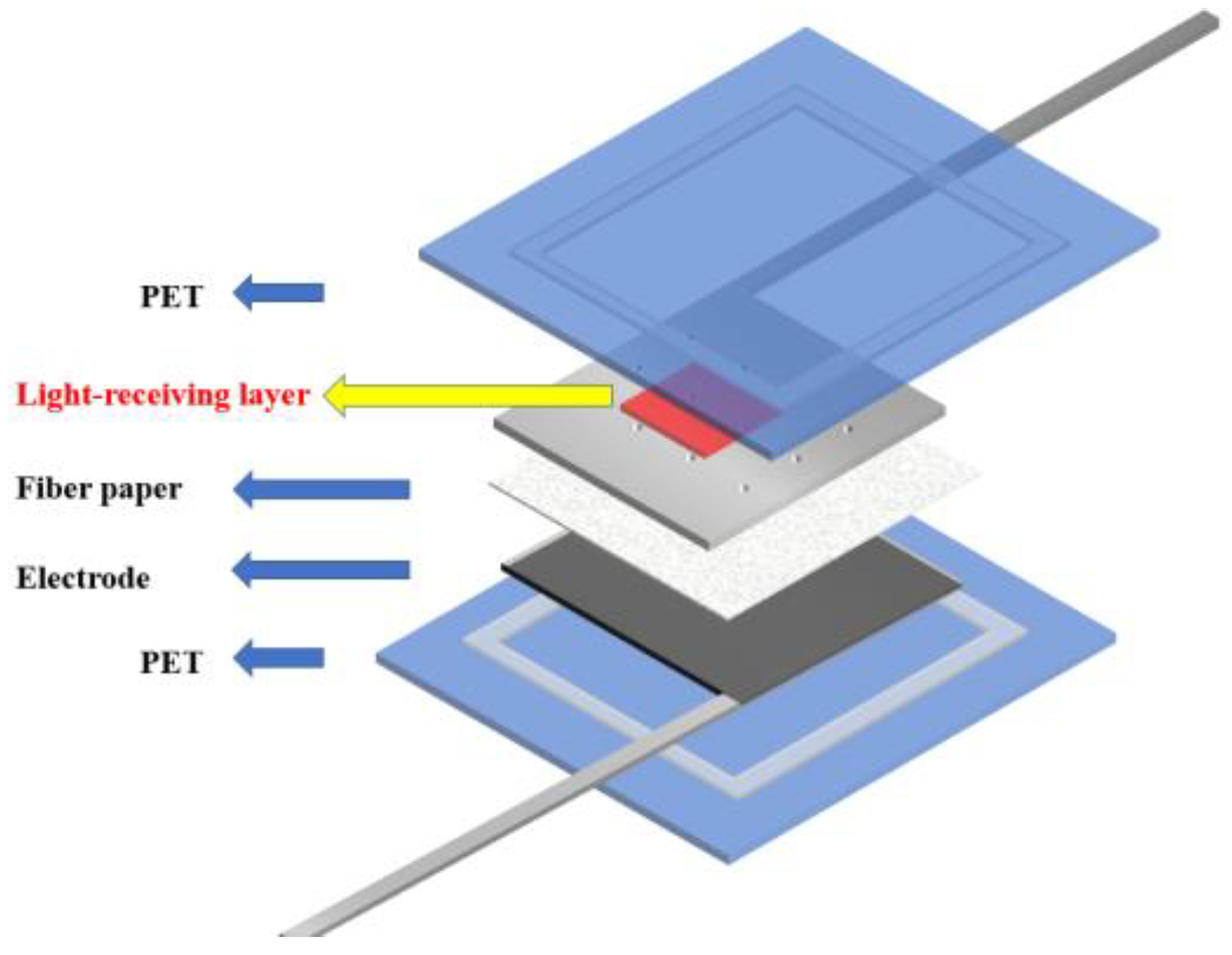
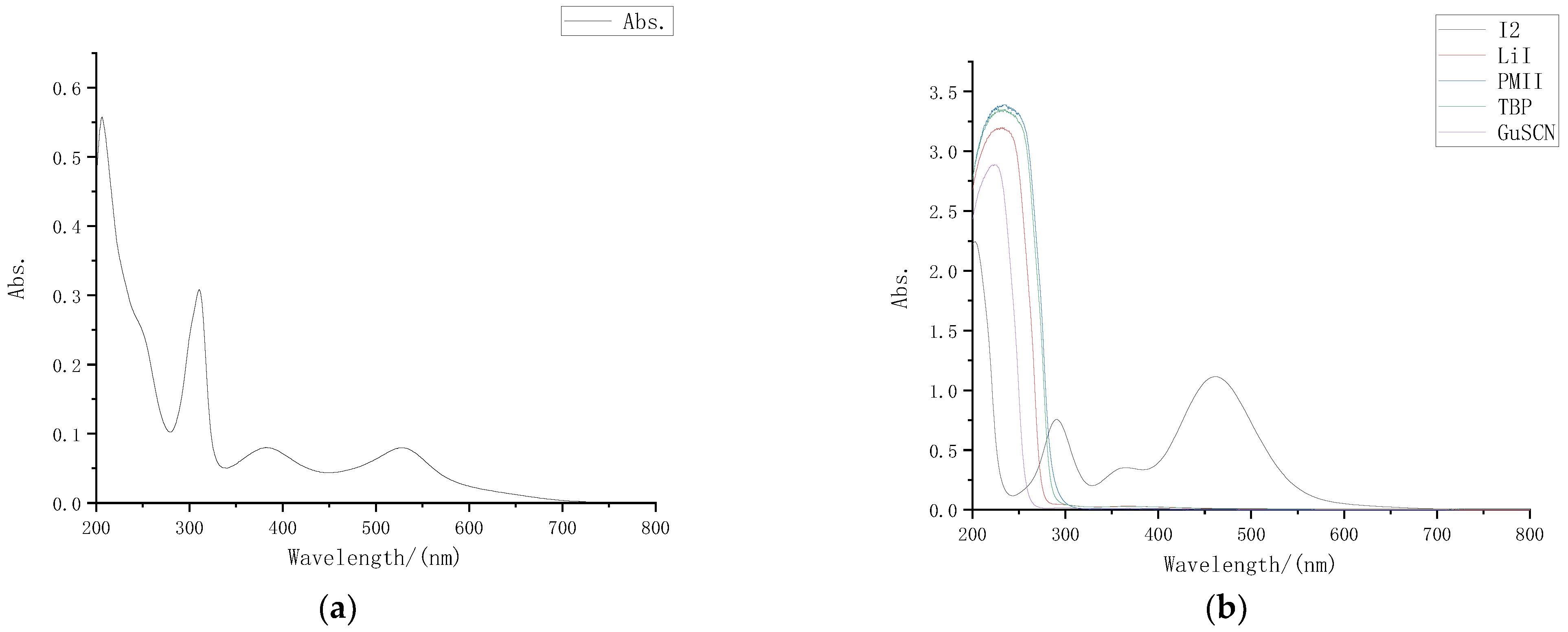
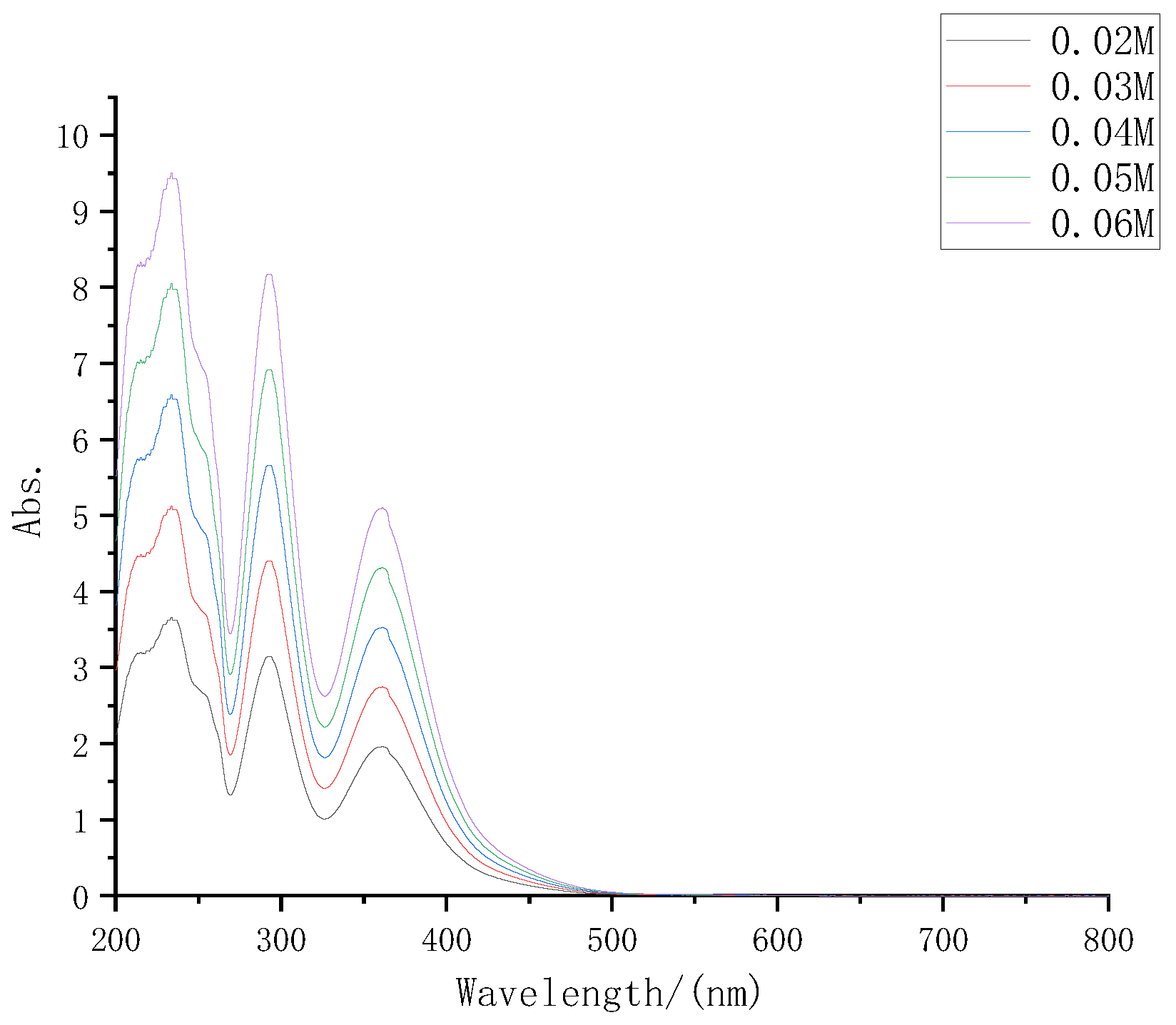


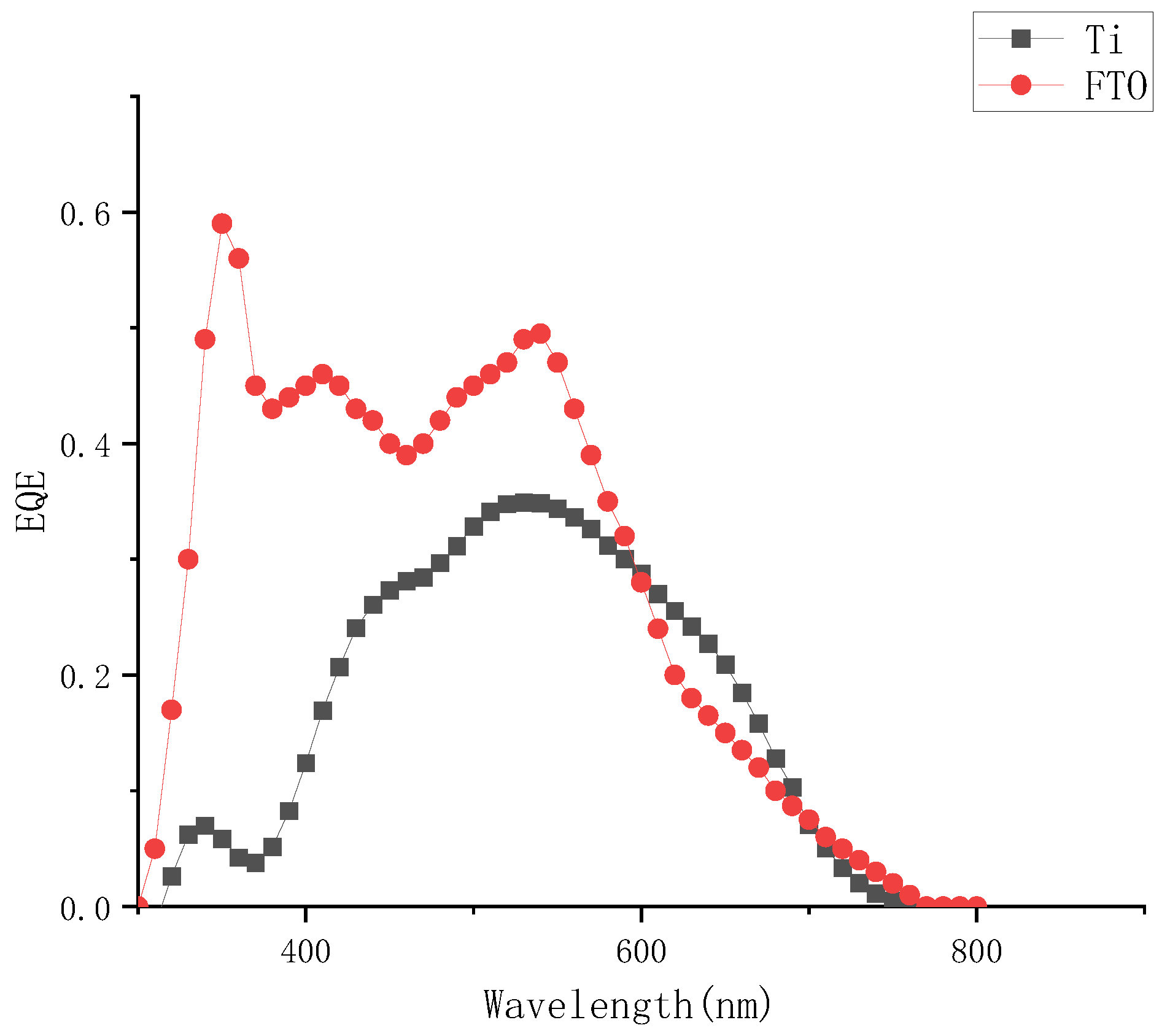


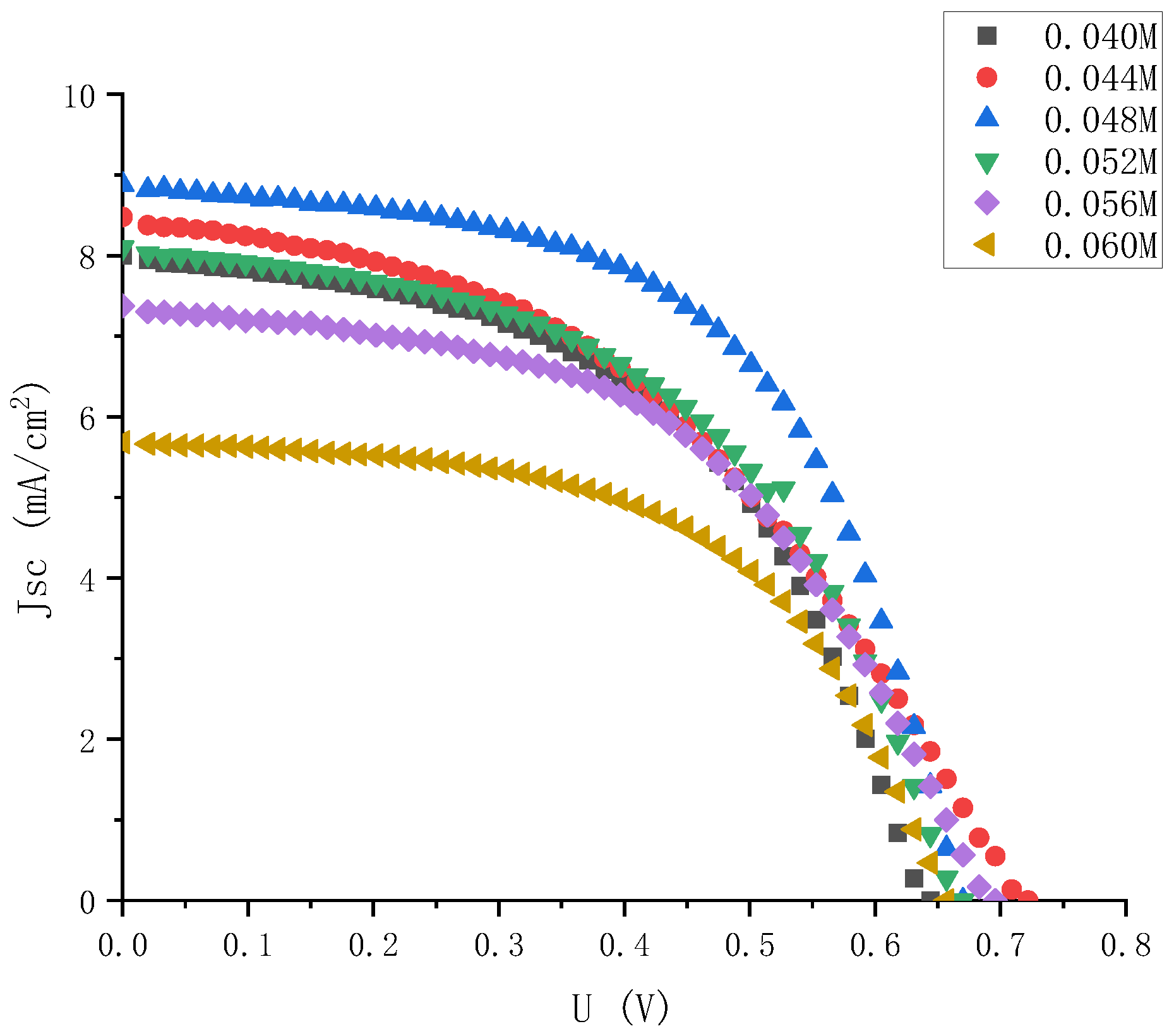

Publisher’s Note: MDPI stays neutral with regard to jurisdictional claims in published maps and institutional affiliations. |
© 2022 by the authors. Licensee MDPI, Basel, Switzerland. This article is an open access article distributed under the terms and conditions of the Creative Commons Attribution (CC BY) license (https://creativecommons.org/licenses/by/4.0/).
Share and Cite
Yang, J.; Liu, J.; Li, Y.; Yu, X.; Yi, Z.; Zhang, Z.; Chi, F.; Liu, L. A DSSC Electrolyte Preparation Method Considering Light Path and Light Absorption. Micromachines 2022, 13, 1930. https://doi.org/10.3390/mi13111930
Yang J, Liu J, Li Y, Yu X, Yi Z, Zhang Z, Chi F, Liu L. A DSSC Electrolyte Preparation Method Considering Light Path and Light Absorption. Micromachines. 2022; 13(11):1930. https://doi.org/10.3390/mi13111930
Chicago/Turabian StyleYang, Jianjun, Jiaxuan Liu, Yaxin Li, Xiaobao Yu, Zichuan Yi, Zhi Zhang, Feng Chi, and Liming Liu. 2022. "A DSSC Electrolyte Preparation Method Considering Light Path and Light Absorption" Micromachines 13, no. 11: 1930. https://doi.org/10.3390/mi13111930
APA StyleYang, J., Liu, J., Li, Y., Yu, X., Yi, Z., Zhang, Z., Chi, F., & Liu, L. (2022). A DSSC Electrolyte Preparation Method Considering Light Path and Light Absorption. Micromachines, 13(11), 1930. https://doi.org/10.3390/mi13111930







